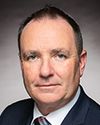Thanks, Mr. Chair.
I also want to acknowledge the testimony of Madame Doucet and Madame Smith and to thank them for it.
My research to Queen's on the topic of this study has focused on the differentiated impacts of military service on women, and also on the military-to-civilian professional transition.
Every year, thousands of service members leave the military, typically in their late 30s, to join the population of Canadian veterans. Almost 75,000 veterans are women—over 16%—which mirrors their representation in the Canadian Armed Forces.
Recognizing this, all programs in support of veterans should take into account the changing demographics of the Canadian veteran population. This means a focus on the growing participation of women in the Canadian Armed Forces. Not only are there more and more women in the military, but also since the late 1980s, they no longer face formal employment restrictions in the military and can compete for all roles, including combat roles. Their representation among regular force officers has even gone past the 20% mark.
We have more women, yet the military is still struggling with gender integration. As my colleague Maya Eichler has noted, tracking the proportion of women veterans is important but tells us little about the specific challenges they encounter on the road to civilian life, as it overlooks gender norms and inequalities based on gender. It's important to draw this parallel between women in the armed forces and women veterans because the experience of women while in the military influences their experience as they transition to civilian life.
As we focus on improving services and programs for veterans, I would invite us to think about the military-to-civilian transition as a distinct but related phase of the military career cycle. For example, when the federal government offers programs for mental and physical health, it is important to identify women's differentiated needs and how these needs may have been shaped by their experiences while in the military. For example, women are more often exposed to cumulative stressors over the course of their career, which may include intense operational experiences, combined with sexual harassment and military sexual trauma, and separation from family as a primary caregiver.
Some not-for-profit organizations have developed programs to support women military veterans and other marginalized groups who experience PTSD related to sexual trauma, deployment and other causes. The government has recognized the importance of using a GBA+ and intersectional lens to identify areas of policy reform as the military responds to the recommendations in the Arbour report, as it aims to respond to unhealthy attrition in the Canadian Armed Forces retention strategy and, increasingly, as it designs veteran support programs.
These approaches have even led to greater coordination between the Department of National Defence and Veterans Affairs, allowing service members to engage in longer-term preparation for transitioning to civilian life. However, much more, of course, needs to be done. Efforts should continue to improve continuity between a life of service and a life after service, as well as public facing efforts that recognize the changing demographic of veterans.
A challenge with this kind of research continues to be the availability of data, given the lack of gender-differentiated research on military-to-civilian professional transitions. The few Canadian studies that have been published are based on interviews and exit surveys done with female military personnel, and are consistent with cross-national trends. They identify professional challenges that are specific to women, who have reported that they never felt fully integrated into the military and that their ability to be promoted while in the military, or their ability to find good jobs after leaving, was hindered by the lack of experience, brought on by exclusionary professional environments while serving.
Even more generally, drawing from the evidence provided in exit surveys as members leave the military, the CAF retention strategy emphasizes that “certain dissatisfiers associated with voluntary release may be more prevalent amongst women than men”. The report cites the lack of fit with the military lifestyle, dissatisfaction with the advancement and promotion system, training and development requirements, as well as workload demands. The document recognizes that gender bias “can negatively affect access to opportunities for leadership roles, career advancement, and the preponderance of women as role models or mentors to aspiring leaders within the CAF.” This, in turn, has an influence on the well-being of serving members and newly releasing members, as well as on the professional opportunities that come after a career in the military.
In a co-authored article with Meaghan Shoemaker, we note:
These experiences that women face while serving, from social isolation and stigmatization by their peers to outright harassment, are important to address for a successful military-to-civilian transition, as they impact mental health.
It continues:
Moreover, part of service members' social networks carries over with them as veterans, which provides additional peer support during transition. Women’s experiences where professional exclusion and workplace harassment were the norm shed light into the difficulty of securing peer support both during and after service.
My past research at Queen’s on this topic, through an initiative called the Gender Lab, aimed to connect these dots between the professional experiences of women and men while in the military to their professional experiences after the military.
It's the right thing to do. We need to stay focused on understanding how we can improve the well-being and transition of veterans, enhancing service provision in the process. Understanding that professional fulfillment contributes to mental health, there is also an opportunity to improve the employment prospects of veterans in a range of sectors given that former military personnel represent a skilled, trained and experienced labour force.
Our research focused on doing an environmental scan of veteran services and programs, as well as conducting interviews and focus groups with members of the armed forces who were considering leaving the military or who had recently released. In addition to the programs offered by Veterans Affairs, there are provincial-level services in health care and employment, in both the public and private sectors, which are designed for veterans, as well as a programs emerging from charities and the not-for-profit sector.
A few findings to highlight from our research indicate that, given the diversity of veteran service providers, attempts at coordinating what is being offered to veterans as well as identifying potential gaps are essential. In one of our publications, we suggest that a collective impact model would be favourable to encourage collaboration across the different sectors and partners involved in veteran service provision.
While the literature has recognized the importance of employment training to improve the labour force participation of veterans, we cannot just put the burden—




